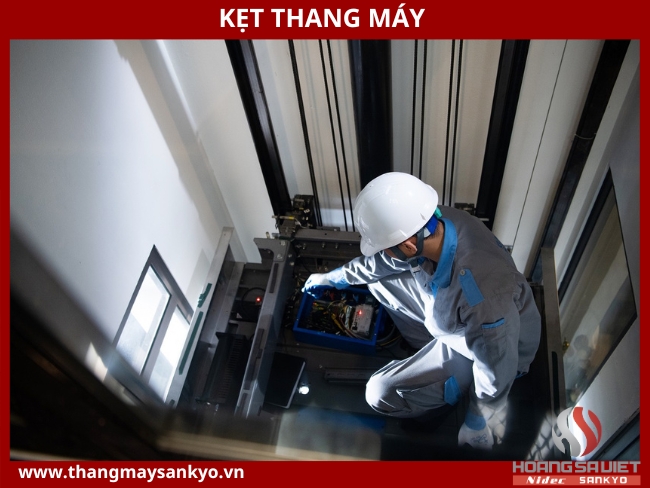The system is processing. Please wait a moment!
- Home experience homelift & elevator technical Sharing experiences
Elevator Hangs: Causes and Remedies
TABLE OF CONTENTS
Hanging elevators is a problem that is not only annoying but also threatens the safety of users. In this article, we will learn about the causes and remedies when the elevator crashes.
The reason why the elevator hangs
Failures in Mechanical Systems:
Elevators, even if designed and installed with high-quality mechanical components, cannot avoid problems due to damage. Components such as cables, sprockets, or transmissions can all experience problems, causing the elevator's performance to be reduced or completely stop working. For example, the cable could break, the sprocket could slip off the track, or the transmission could have a lubrication problem, leading to elevator operation problems.
Errors in the Electrical System:
Voltage problems or damage to electrical components are also one of the main causes of elevator failure . Components such as inverters, controllers, sensors, or wiring can malfunction and disrupt elevator operation. For example, if the inverter has a problem, the elevator may lose supply voltage and cannot move normally.
These problems, although undesirable, frequently occur during elevator use and require timely technical intervention to fix and re-engineer the system, ensuring safety and performance. elevator operation.
Exceeds Design Weight:
One of the common causes of an elevator hanging is when it is overloaded compared to its original designed weight. Although elevator systems are calculated and programmed to withstand a certain weight range, when this limit is exceeded, there is a risk of serious damage and incidents.
When an elevator is overloaded, the pressure and stress on components such as cables, sprockets, and mechanical systems increase significantly. This can lead to problems such as broken cables, sprocket slippage, or damage to the transmission. Furthermore, overloading also affects elevator performance, increases safety risks for passengers and causes unwanted incidents during operation.

Power Outage or Power Supply Problem:
Sudden power outages or power supply problems are one of the common reasons why elevators stop working. When the power goes out, the elevator's electrical system no longer has the energy supply to operate, leading to the elevator stopping at a certain floor in the building.
This problem can occur for many reasons, from a general power outage in the area to a technical problem in the elevator's electrical system. In some cases, power failures can be prevented by UPS (Uninterruptible Power Supply) systems or backup generators, but without these precautions, power outages can cause serious problems. emergency situations and threats to passenger safety in the elevator.
Control Software Error :
Software errors in the elevator control system are one of the other causes that can cause crashes, causing the elevator to be unable to move or operate asynchronously.
This error can come from many causes, including programming errors, software conflicts, or errors during the software update process. When encountering a software error, the elevator control system may not be able to recognize control signals or not execute movement commands properly.
Failure in the Safety System:
Malfunctions in the elevator's safety system, such as emergency sensor failure, can be a cause of stalling. The safety system is designed to detect and respond to dangerous situations such as sensor failure, power failure, or other emergency incidents to ensure user safety.
When the safety system detects a problem, it can activate automatic shutdown mechanisms to prevent the elevator from continuing to operate in an unsafe condition. This could cause the elevator to stop suddenly or be unable to move, leading to a stall.
SEE MORE OTHER PRODUCTS:
Remedy when the elevator hangs
To fix this problem, elevator technicians need to check and replace damaged emergency sensors and recheck the safety system to ensure proper and effective operation. Performing periodic inspection and maintenance of the safety system is also an important preventative measure to minimize the risk of this incident and ensure the safety of elevator users.
Check the Electrical System:
The technician will conduct a complete inspection of the elevator 's electrical system to ensure that no problems have occurred and that all components are functioning properly. This includes testing the input power source, controls, and control panels to detect and correct any problems that may affect elevator operation.
Checking the Mechanical System:
Next, mechanical components such as cables, sprockets, and transmissions will be thoroughly inspected to detect and fix problems. The technician will check the strength of the cable, the smoothness of the sprocket, and the correct operation of the drive to ensure that these components do not cause stalling.
Using the Emergency System:
In some cases, the emergency system will be activated to minimize risks and return the elevator to a safe position. This system includes safety mechanisms such as emergency sensors and emergency brakes to ensure user safety.
Call a Professional Technician:
If the freeze cannot be safely fixed, calling a professional technician is necessary. Technicians will have the skills and tools necessary to effectively identify and repair problems, while ensuring the safety of elevator users.

What should you do to prevent the elevator from hanging?
To reduce the risk of an elevator stalling, there are a number of measures you can take:
Periodic maintenance : Perform periodic maintenance on elevators, including inspection and maintenance of mechanical and electronic components. This will help detect and fix small problems before they become big problems.
Continuous monitoring : Elevators should be continuously monitored through an online monitoring system or through sensors to detect any problems early.
Employee training : Ensure employees are properly trained in elevator use and maintenance, and know how to handle emergency situations.
Comply with safety regulations : Comply with regulations and safety standards related to elevator operation and maintenance.
Check weight : Make sure not to exceed the maximum load weight designed for the elevator, to avoid causing overload and damaging components.
Update software and equipment : Ensure that elevator control software and equipment are updated periodically to avoid problems related to software errors.
Safety system testing : Perform periodic testing of safety system components such as emergency sensors and emergency brakes to ensure they are operating properly.

Danger level for customers when the elevator crashes
Passenger Safety: When an elevator stalls, passenger safety may be at risk. Without safety measures, opening the elevator door and exiting can be difficult and dangerous.
Medical Conditions : For people with health problems, such as the elderly or people with disabilities, being stuck in an elevator can cause anxiety, stress, and even problems. serious medical.
Stuck Time : If the elevator is stuck for a long period of time, the feeling of being stuck in a tight space can cause anxiety and fear in passengers.
Mood and Spirit: In situations of being stuck in an elevator, passengers' mood and spirit often face many different challenges and emotions. While not always life-threatening, the stress and anxiety of being stranded can cause notable psychological and mental problems. Below is a detailed analysis of the passenger's mood and spirit in this situation:

1. Stress and Anxiety:
Feeling Trapped: Passengers may feel confused and out of control when they realize that the elevator is stuck.
Safety Concerns: Concerns about the safety of yourself and those around you may increase, especially when the exact cause of the incident is unknown.
2. Insecurity and Fear:
Feelings of Insecurity: Not knowing when the problem will be resolved or whether the solution is safe can create feelings of insecurity.
Increased Fear: In some cases, passengers may experience feelings of fear and panic, especially if they have had unpleasant experiences with elevators.
3. Discomfort and Psychological Reactions:
Discomfort and Anger: Inconvenience and discomfort can increase feelings of irritability and irritability.
Different Psychological Reactions: Each person may have different psychological reactions to the situation of being stuck in an elevator, from fear to confusion or dissatisfaction.
Potential for Rescue: The level of danger also depends on the possibility of rescue and the existence of safety measures such as emergency and communication systems for rescue that can ensure the safety of stranded passengers.
SEE MORE OTHER PRODUCTS:
What should customers do when they are in a situation where the elevator is stuck?
When customers encounter a stalled elevator situation , they need to take a number of measures to ensure safety and minimize stress. Here are some essential instructions:
1. Stay Calm and Stay Positioned:
In a stalled elevator situation, staying calm is an important factor to ensure the safety of everyone in the elevator. Maintaining optimism and controlling emotions will help customers maintain alertness and act effectively when faced with unexpected and difficult situations. Here are some tips to help customers stay calm and spirited in a stalled elevator situation:
1. Self-Control :
Breathe deeply and focus on keeping your mind calm.
Remind yourself that panicking won't help and will only make the situation worse.
2. Trust in Safety Measures Included in Elevators :
Remember that elevators are designed with many safety features to protect passengers in the event of an emergency.
Trusting in safety measures such as the rescue call system and the approach of the rescue team will help reduce stress and anxiety.
3. Search Information:
Try to get information about the situation from the elevator communication system or from the building manager.
Knowing the situation and being given specific information can help reduce anxiety and create a sense of reassurance.

4. Communication and Support:
If there are other people stuck in the elevator, find a way to interact and communicate with them.
Sharing the situation and providing mutual support will help create an environment of solidarity and reduce feelings of loneliness and insecurity.
5 . Find Ways to Relax :
Try to find ways to reduce stress by practicing relaxation techniques such as deep breathing, focusing on a focal point or sipping on something small to relieve tension.
By remaining calm and optimistic, customers can deal with elevator crashes more effectively and safely. Applying these tips will help them maintain their sanity and maximize their chances of taking safe and correct measures.
5. Wait Until Rescue Arrives:
When stuck in an elevator, waiting for help from the rescue team is a smart and safe decision. Even if you feel nervous or uneasy, being patient and following safety instructions is important to protect yourself and other passengers in the elevator.
In case the elevator crashes, determining the cause and taking timely corrective measures is very important to ensure safety and convenience for users. Maintaining and periodically inspecting elevator systems also helps minimize the risk of crashes and other problems.

SEE MORE OTHER PRODUCTS:







.png)
.png)

.png)












